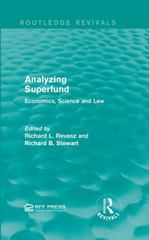1. (4 points) Production Possibility Frontiers: oats and beef Table 1. Production of oats and beef Wheat Oats (bushels) (bushels) 130 10 129 20 127.6 30 125.3 40 121.4 50 115 60 105 70 90.1 80 68.8 90 39.4 100 a. (1 point) Draw a production possibilities curve for your 200-acre farm between growing oats and wheat. Is there a tradeoff between these two? How is a tradeoff shown in your graph? (Make sure you label your axes.) b. (1 point) Is the trade-off constant or does it change as you have more or less oats and wheat? How is the trade-off represented in the slope of the line? Why does the trade-off change? c. (1 point) What is the price of oats? What is the price of wheat? Add a column to Table 1 and give the price of additional bushels of oats or bushels of wheat in terms of wheat or oats respectively. Where is the price of oats on your graph? What happens to the price of oats as you are growing more oats and less wheat? Why does the relative price change and how does this relate to the neoclassical theory of production? d. (1 point) Suppose instead of producing wheat, you grow potatoes which restore the fertility for oats by breaking the pathogen-host cycle, just as the oats make the soil better for potatoes by breaking the pathogen-host cycle for potatoes. What happens to your production possibility frontier? Does this mean that you have a free lunch? 2. (5 points) Capitalism a. (1 point) what are the "means of production"? And what are the "relations of production"? Can the "means of production" be the same under capitalism as under slavery or feudalism? Can the "relations of production" be the same under capitalism as under slavery or feudalism? b. (2 points) why do people work when they own their own farms, workshops, or other means of production? Do they work to make money? Or for some other purpose? Will their motivation to work change if they are employed by others in a capitalist enterprise? Do capitalists have the same motivation to produce as do people working for themselves? 2 points) According to a business publication, 'Coffee chain Starbucks sees China as its largest growth opportunity, and company CEO Kevin Johnson says the firm is pushing full speed ahead as it maps out it growth plan for the next 10 years" Why does Starbucks look to expand its business? Is there a tendency inherent in capitalism to expand? Relate your answer to the capitalist circuit of production. 3. (6 points) Externalities. The Biden administration has been reversing measures taken by the Trump Administration designed to increase industry profits DOW and employment at the expense of clean air and AND Poisoned water. SCOTT me PRUITT a. (1 points) How should we evaluate policy changes like these? How can we tell if they HELPING are good or bad? THEM b. (2 points) If people didn't like the Trump Administration's actions, how else might they get the industries that benefit to stop polluting? Could the market lead to the efficient level of pollution if there are full and clear property rights? c. (3 points) By themselves, the United States, the People's Republic of China and India account for almost half of world greenhouse gas emissions causing catastrophic climate change. Many of the poorest countries, including those producing the fewest greenhouse gases, will suffer the most from climate change. i. Why don't countries most threatened, pay the polluters to stop? ii. Even the rich will suffer from climate change. Use game theory and the prisoners' dilemma to explain why China, India, and the United States don't agree to stop polluting. 4. (5 points) Is inequality necessary? Is it good? a. (1 point) Describe economic inequality in America. Compared with other countries or with the United States in the past, how unequal is the distribution of income? a. (2 points) Should we equalize income for all Americans? Explain the utilitarian and Rawlsian arguments for egalitarian social policies. Explain alternative arguments against egalitarian policies, such as natural rights arguments (John Locke and Robert Nozick) and utilitarian arguments (Arthur Okun). b. (2 points) Are egalitarian policies gendered? Do women benefit more from egalitarian policies that reduce disparities in income? Why







